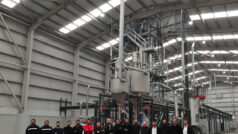The firm said that a year of “unprecedented declines” in the price of scrap plastic and aluminum, along with a reduction in state subsidies for recyclers, meant that those centers were “no longer sustainable.”
Oil and natural gas provide the building blocks of most plastics. The price of new plastic has gone down as oil prices have plummeted to less than half of what they were two years ago.
Recycling programs could be moneymakers when prices are high. A fall in oil and gas prices makes new plastic cheaper than the recycled one. This in turn brings down the commodity price for recycled. A ton of recycled polyethylene plastic, which is now worth about $200, went for over $500 five years ago.
“Lower prices at the gas pump are not good for recycling,” said Chris Doherty, a spokesperson for the National Waste and Recycling Association. “With the price of oil being down, the cost of recycled plastic as a commodity is way down as well,” Doherty explained.
California-based Container Recycling Institute said that this decrease is a problem in the state, where bottles are recycled at twice the rate of the rest of the US. The state pays recycling centers subsidies meant to lessen the shock of falling scrap prices. CalRecycle bases the subsidies on a 12-month average of scrap prices.
The processing payments fell at the end of 2015, spurring rePlanet’s closures. However, Oldfield said the subsidies have gone back up since then and are set to increase again in July.
Susan Collins, president of the Container Recycling Institute, said that the closures have resulted in “an absolutely immediate hit” for consumers, particularly in rural areas. People have complained of waiting in long lines to turn in their recyclables in some northern California communities.
“That’s not what this system was designed to do,” said Ms. Collins, adding that “it was designed to be as easy to get your nickels as it was to pay them in the first place.”
Low commodity prices are also hitting the industry’s biggest players outside California. US’ largest trash hauler Waste Management said that its recycling revenues fell by almost $140 million in 2015 and another $13 million in the first quarter of 2016. Waste Management said that average commodity prices dipped another 12% in the first quarter of 2016.
Recycling activities came to a halt in October 2015 in Escambia County, Florida, when a company that processed its waste closed doors abruptly due to low scrap prices. The 40,000 tons a year of bottles, cans, and paper that had been going to a plant in Alabama then began to get dumped into a landfill.
“People want to recycle, it diverts items from going into landfills,” Doherty said, adding that “there’s still a market for making recyclable products.” “It’s just the economics relative to plastic and oil have significantly altered the business model,” said Doherty.










